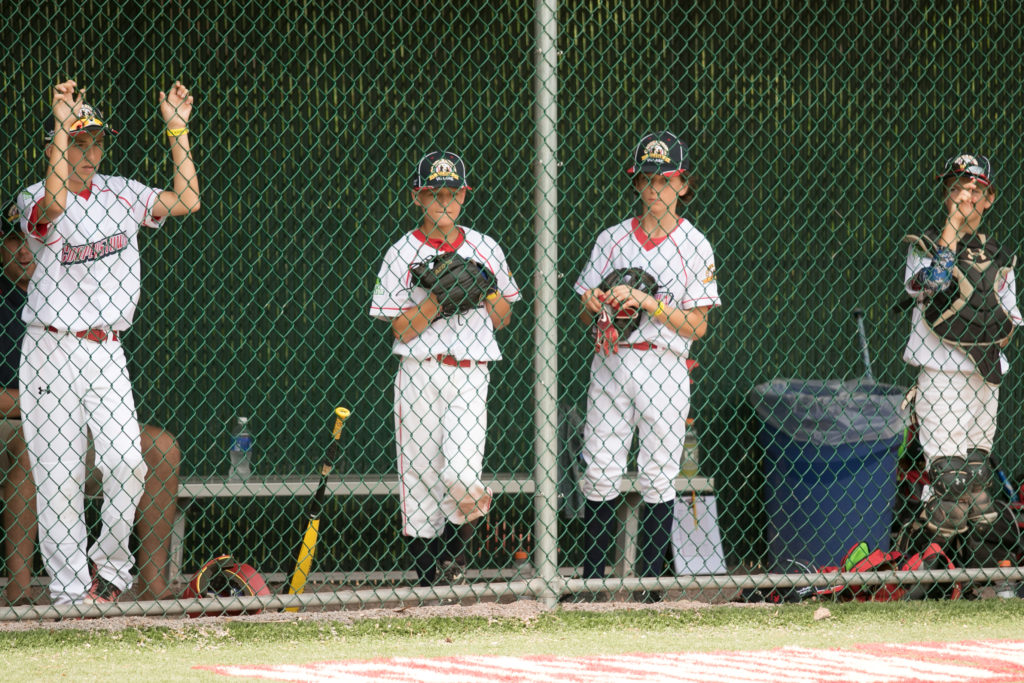The Youth Sports Machine
Originally published in the Baltimore Sun on June 2, 2014
Parents of child athletes, take this quiz: Does your child receive lessons from a professional, paid coach in addition to a team coach? Do you routinely travel more than 30 minutes, one way, to your child’s sporting events? Does your child’s sport schedule conflict with other family commitments?
If you answered yes to any of the questions above, chances are your family has also been ensnared in the sport-centric web that’s now so much a part of childhood. I know mine has. It’s tough to pinpoint how it happens or who is to blame. One day, your kid is a happy-go-lucky 5 year old playing tee ball or jumping off the edge of the pool, cannonball-style. Fast forward a handful of years and those carefree days are likely to be replaced by marathon swim meets, baseball tournaments, year-round practice and competition that feels very un-childlike. And it’s not just the young players who endure it.
Youth sports have shaken up long-standing family traditions. Take the family dinner hour. Ask anyone with kids involved in competitive sports when they last ate dinner as a family more than twice in one week. They may not be able to tell you. Other time-honored customs of childhood, like chores and free time to hang out with neighborhood kids, also are fading away. As so many families get swallowed up by competitive youth sports, the trickle-down effect feeds into an entire society.
This might sound like hype, but think about it. In just a few decades, competitive youth sports have managed to erode an American cultural practice that’s been around since biblical times: the notion of Sundays as a day of rest. Nowadays, kids’ youth league sports tournaments and events roll on as if Sunday just any other day. To dissolve an embedded societal norm is pretty powerful stuff.
Is it worth it?
Some would say yes, arguing that the kids enjoy the game, form great friendships with teammates, and learn discipline, sportsmanship and to be on time. Maybe, down the road, a kid’s athletic prowess helps open doors to colleges that otherwise would have been shut. Possibly these kids even get a scholarship to attend a Division 1 college, paying back some of the thousands parents have shelled out over the years on equipment, tournament costs, orthopedic visits, etc. But that’s not a likely scenario. Only about 2 percent of high school athletes receive college athletic scholarships — a tiny fraction of the kids you see flocking to sports fields every weekend. But for some families, this hyper-attention to kids’ athletic endeavors may cause splinters, particularly if not everyone in the household is on board with the sports madness. Moreover, it could cause child-athletes to believe, from a very young age, that their specialized sports interest comes before all else, and that it’s completely normal for their parents to bow to their every need: wearily cleaning uniforms late at night so they’ll be ready for tomorrow’s early morning game, packing special meals (and ice for sore, overused joints) putting thousands of miles on the family car and generally treating kids like mini professional athletes — or royalty. There’s also the very real and serious risk of sports burnout and injury — both far more likely when kids are engrossed in a sport, full-bore, from a young age. If either of these scenarios occurs, then what?
Most likely, the family dumped music lessons and other extra-curricular activities long ago because they didn’t fit into the sports schedule. And old friends won’t likely welcome them back, since they too got squeezed out of the picture as sports took over free time. So, what’s next? Therein lies a serious question. It’s one that parents, myself included, may want to think long and hard about — possibly between innings and rain delays, during long drives to and from fields, or while slouched over the washing machine late at night.
http://articles.baltimoresun.com/2014-06-02/news/bs-ed-youth-sports-20140601_1_competitive-youth-sports-sports-fields-kids
